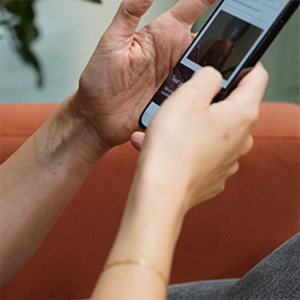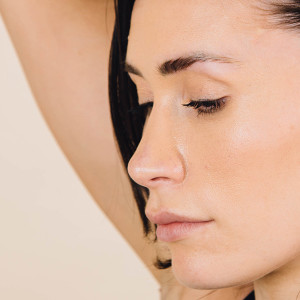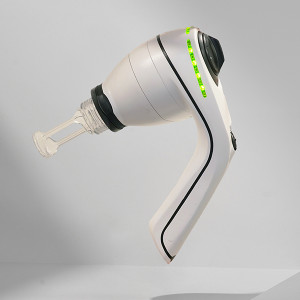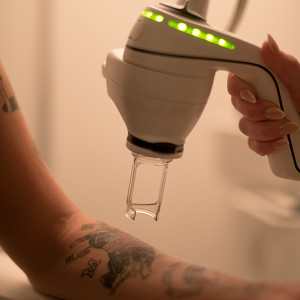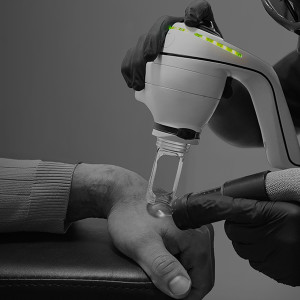
WHAT IS THE BEST WAY TO REMOVE A TATTOO?
Throughout history there have been numerous experiments made into how best to remove a tattoo. Today the safest and gentlest way to remove a tattoo is using a laser with a short pulse width and an accurate spot size. The LightSense™ laser has a pulse width - that’s how long the flash of light is on for - of a staggeringly short eight picoseconds. That means that the heat of the laser touches the skin for an incredibly short moment. The comparison our expert consultants like to make is that it’s a bit like ripping off a plaster. If you do it quickly you feel less pain. Plasters, lasers, tomato, tomato. The laser also has a miniscule spot size of 0.4mm, smaller than the nib of a pen. This means that our expert consultants are able to accurately direct the laser beam at the ink pigment, keeping skin safe and healthy. The LightSense™ laser is exclusively available at NAAMA studios.

A SHORT HISTORY OF TATTOO REMOVAL
Some of the earliest, most primitive methods for removing tattoos include dermabrasion and salabrasion. They involved wearing away the skin’s superficial layer with a brush or a solution of water and salt, and could leave the body vulnerable to infection - that’s not to mention that they could be incredibly painful removal methods. Fast forward to 1967 and Dr Leon Goldman conducted the first successful laser treatment on a tattoo, just seven years after the laser itself had been invented. In 2020 the LightSense™ was launched using designs from a group of Princeton scientists, with the specific aim of making laser tattoo removal fast, safe, and skin-kind. “We have completely re-envisioned tattoo removal, placing comfort and patient safety front and centre,” says Dr Steven Hubert, part of the team that originally developed the laser system at leading centre of research Princeton University. “As a dermatologist used to caring for skin it horrified me that the existing market for tattoo removal seemed to have accepted that pain, blistering, swelling, and other forms of skin damage were par for the course.” There have been a number of ways to remove tattoos historically and laser technology has continued to develop over time. We are now at the point where laser tattoo removal treatments should be fast, safe, and effective if the right laser is used.
Publish Date in article


DOES SKIN GO BACK TO NORMAL AFTER LASER TATTOO REMOVAL?
After laser tattoo removal your skin should go back to normal, especially if you have followed our detailed sun exposure guidelines and have a healthy and functioning immune system. Our experts do everything they can to make treatments as skin-kind as possible, so your skin returns to normal as soon as possible. To ensure that you are adequately prepared for laser tattoo removal we have an informed consent form that we ask all of our clients to complete. On the form we discuss what is normal to observe on the treated skin after sessions. Over half of our clients will experience the following post-treatment, and it’s all perfectly normal:
A thin white film often described as ‘frosting’ on the skin. Typically, this subsides within 5-10 minutes, though it may take a little longer.
There may also be whitening of the hair in the treatment area, especially after treating eyebrows. This is due to the hair losing its pigmentation; it is not related to hair loss and will not impact the colour of regrowth. In terms of rare, adverse events, a very small percentage of our clients experience the following temporarily:
0.92% of clients experience blisters - the low-energy laser minimises this possibility
0.21% of clients experience hypopigmentation - small patches of skin appear lighter
0.02% of clients experience hyperpigmentation - small patches of skin appear darker As you can see these are low percentages indeed. This is in part because we responsibly use the Fitzpatrick scale to determine how best to treat your skin. Another factor is the LightSense™ laser with its low energy, specifically 34 times less than the average picosecond laser. The majority of our clients are happy with their fresh and clear results - just take a look at our client stories. We’ve also detailed the best aftercare for healthy skin here, because a sensible aftercare routine will greatly improve the chances of your skin healing fast and well.

